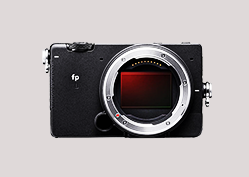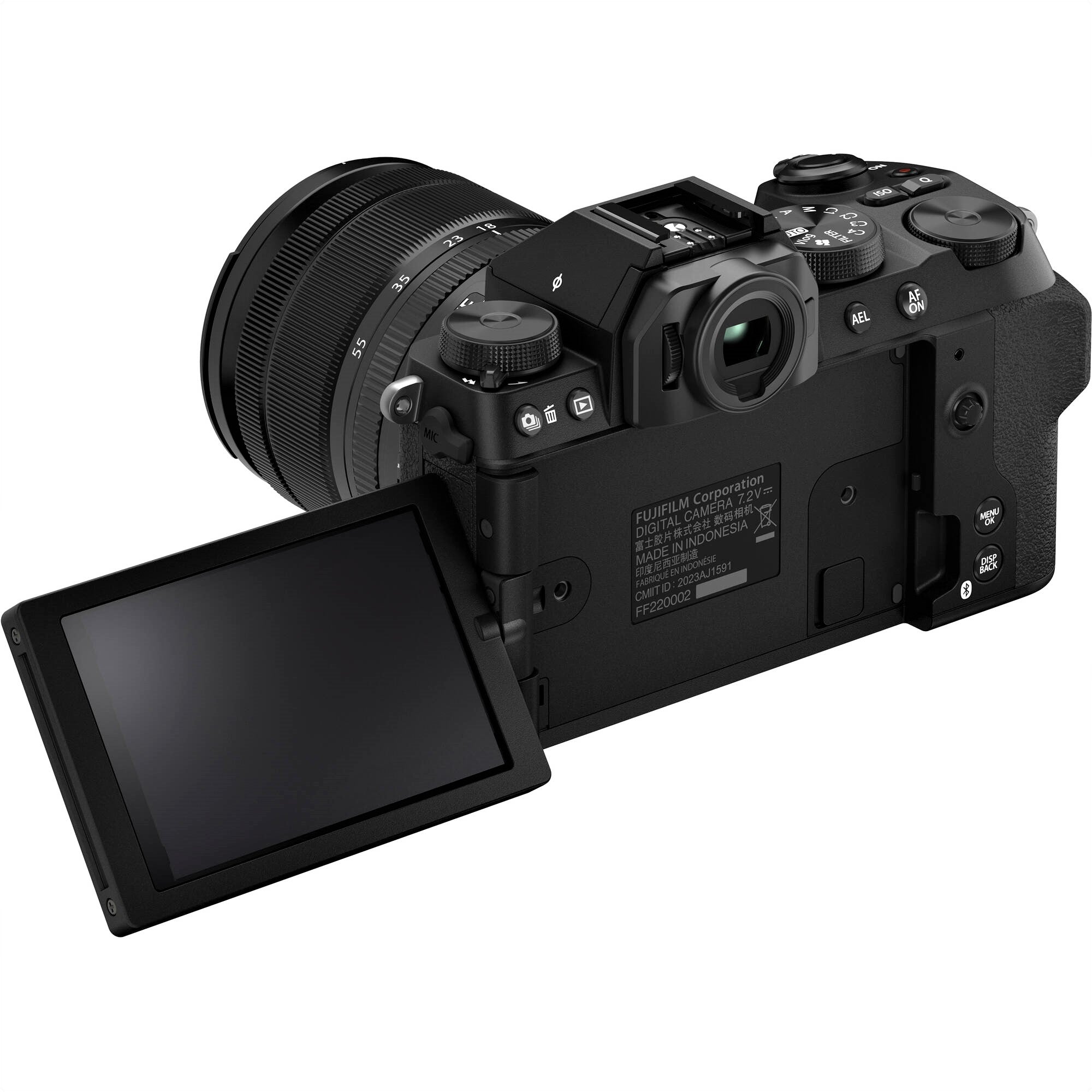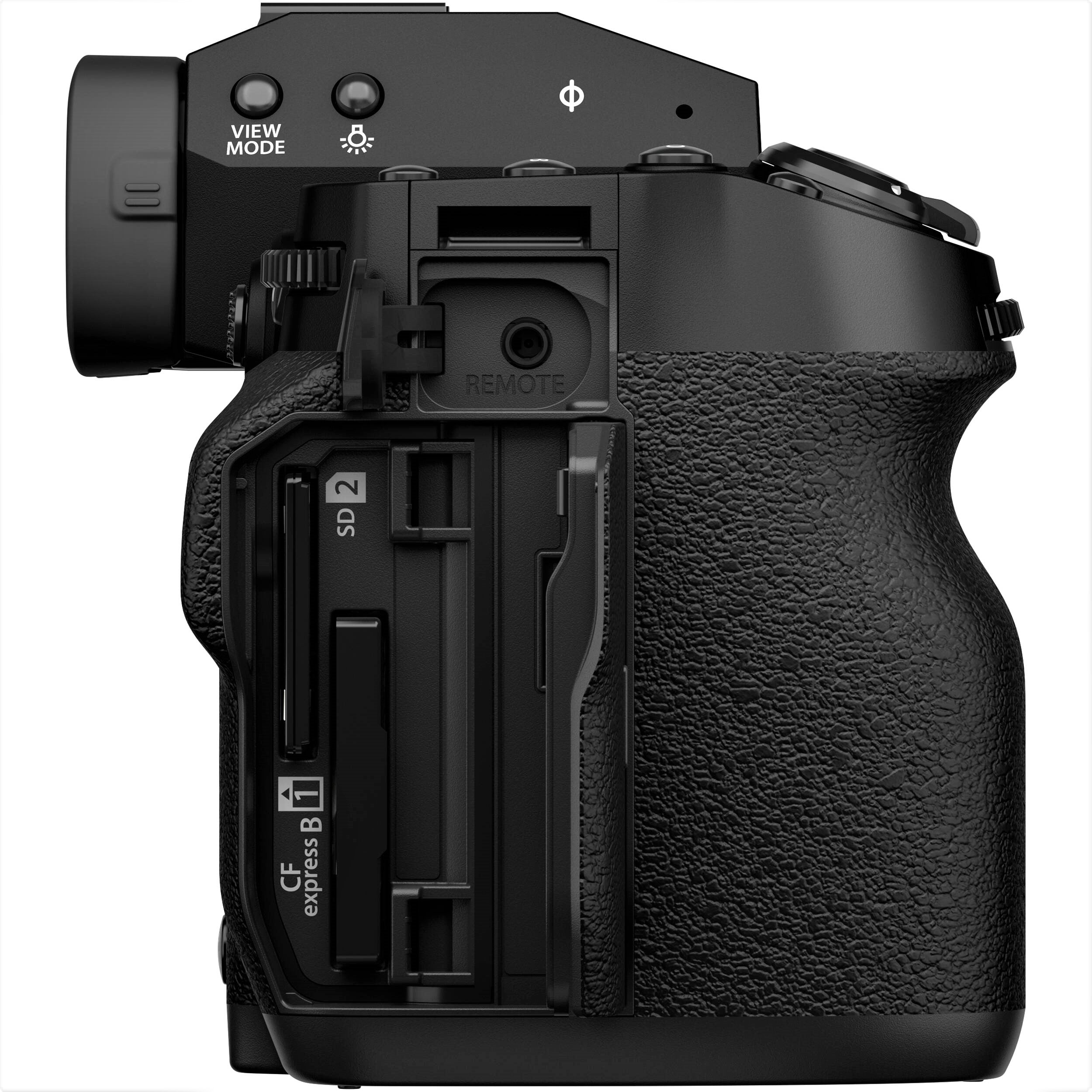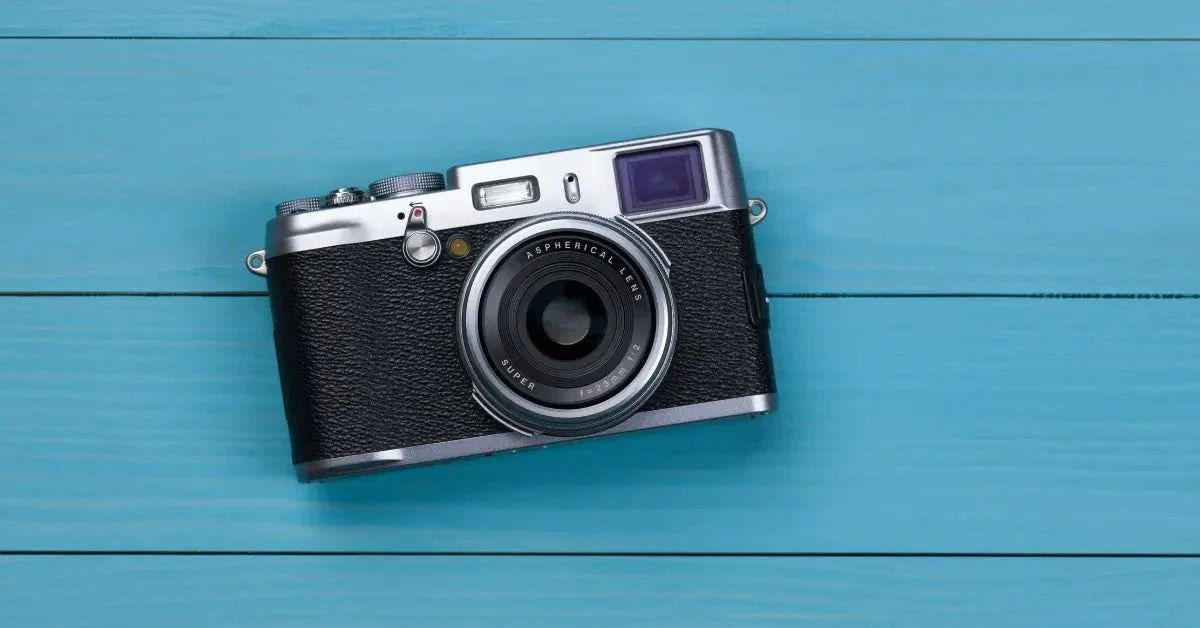Have you ever thought about how we used to take pictures before everything went digital? It's fascinating. There was a time when every photo required careful planning. We had to think about the lighting, the angle, and the moment. Every shot counted because film was limited.
We used cameras with rolls of film inside. You'd wind the film after each shot to prepare for the next. It wasn't instant. You had to wait until you finished the roll, then take it to a store for development. The anticipation of seeing the photos was part of the experience.
Believe it or not, the invention of the camera was a game-changer, reshaping how we capture and cherish our memories, communicate ideas, and even view the world around us.
This little gadget has come a long way, touching everything from the arts to sciences, and its history is just as colorful as the images it captures.
In this blog, we're looking into the camera's storied past. How did it all begin? What were the significant milestones? The camera's evolution has been remarkable, shaping our personal memories and influencing society profoundly.
So, get your popcorn (or your camera if you're inspired) and come with me on a time-traveling adventure. We'll see how a simple box changed our way of documenting life.
Let’s uncover the camera's story, from its simple beginnings to becoming a must-have in our tech-filled world.
The Genesis of the Camera Obscura

Long before Instagram or the selfie, there was the camera obscura, a clever little setup that sounds more like a magic trick than a precursor to the modern camera. The term "camera obscura" literally means "dark room" in Latin, and it was just that—a darkened room or box with a tiny hole on one side. Imagine a small, sunlit scene outside that room.
Light from that scene passes through the hole and projects an upside-down image of the outside world onto a surface inside the room. It's like watching a live movie, but everything's flipped!
This idea wasn't born in a lab or an inventor's workshop but had been floating around since ancient times. Figures like Mozi, a Chinese philosopher, and Euclid, a Greek mathematician, had already played around with this optical concept.
However, it was Alhazen, an Arab scholar in the 11th century, who really dove deep into the mechanics of it all.
In his groundbreaking work on optics, he not only described how light travels in straight lines and detailed the camera obscura but also set the stage for understanding how our eyes see the world.
Alhazen's studies were critical because they laid down the basic principles of optics—how light interacts with eyes and lenses, which is pretty much the backbone of all photography. This wasn't just theory; it was the beginning of a journey that would eventually lead to capturing images on film.
So, next time you snap a quick pic on your phone, think about that dark room and the tiny pinhole that started it all!
The Birth of Photography: Joseph Nicéphore Niépce and the First Photograph

Joseph Nicéphore Niépce, a French inventor and a true pioneer in the world of photography, managed to snap the first successful photograph after numerous trials and errors. Back in the early 19th century, around 1826 or 1827, Niépce used what was known as a camera obscura, equipped with a simple pewter plate.
But here's the kicker: the plate wasn't just any plate—it was coated with bitumen of Judea, a kind of naturally occurring asphalt. He placed this setup in his charming estate, Le Gras, in the window of his upstairs apartment, and what it captured was nothing short of revolutionary.
The photograph, affectionately called "View from the Window at Le Gras," might not win any beauty contests by today's high standards—it's a bit murky and vague, to be honest.
But back then, it was groundbreaking. Imagine this: the exposure time was a whopping eight hours! That meant Niépce had to keep his setup completely still from sunrise to well past lunch, just to capture one image.
This historic shot isn't just a picture; it's the cornerstone of modern photography, marking the shift from simple observation to a permanent capture of reality. It was a clunky and slow process, but it laid the groundwork for the incredible photographic technologies we benefit from today.
History of Photography
Photography does more than just capture moments; it changes how we see the world. This art and science combo has evolved significantly over two centuries.
- Early Beginnings (1800s): It started in the early 1800s. Joseph Nicéphore Niépce made the first permanent photo. He used a technique called heliography, which took hours of exposure. Later, he teamed up with Louis Daguerre to create the daguerreotype in 1839. This new method took less time and gave clearer pictures.
- Paper Photography: At the same time, William Henry Fox Talbot in England was making the calotype. This used paper and silver iodide. It let photographers make several copies from one negative.
- Wider Reach: The 1800s were full of new ideas. Frederick Scott Archer's collodion process cut costs and exposure time. Then George Eastman made Kodak in the 1880s. His motto, "You press the button, we do the rest," made photography easy for everyone.
-
Color Photos: Color photography started early but only got big in the mid-1900s. Kodak's Kodachrome film in 1935 changed the game with bright, lasting colors.
- Going Digital: The big switch to digital changed everything. From the late 20th century, digital cameras started replacing film. Now, phones have cameras, making photography a key part of our daily lives.
- Beyond Technology: Photography isn't just about the gear. It's a form of art and a key part of journalism and history. It can influence opinions, sway politics, and capture deep emotions.
- Looking Ahead: Today, photography keeps changing with tech like AI cameras, high-res phone cameras, and virtual reality. These are setting the stage for a future where we interact with and immerse ourselves in photos differently.
Photography lets us see our history and imagine our future. Its ongoing story is full of chances to learn and admire, showing its lasting effect on us individually and as a society.
Who Invented the Camera

The invention of the camera isn't attributed to a single person but evolved through the contributions of many inventors over centuries. Here are a few key figures in the development of the camera:
- Joseph Nicéphore Niépce - Often credited with creating the first successful photograph, Niépce developed the heliography technique, producing the oldest surviving photo from nature in 1826 or 1827.
- Louis Daguerre - Working in partnership with Niépce, Daguerre developed a more refined and practical method known as the daguerreotype process, which was introduced to the public in 1839. This process significantly reduced exposure times and produced clearer, more detailed images.
- William Henry Fox Talbot - Around the same time as Daguerre, Talbot invented the calotype process, which created negative images that could be used to produce multiple positive prints. This was a significant advancement because it allowed for photographs to be reproduced from a single negative.
- George Eastman - Founder of Kodak, Eastman made significant contributions in the late 19th century by popularizing film-based photography and making cameras accessible to the general public with the Kodak camera, which came pre-loaded with a film roll capable of 100 exposures.
These inventors and many others contributed to the development of the camera, each adding a piece to the puzzle that would eventually lead to the sophisticated digital cameras we use today.
Advancements and Innovations: From Daguerreotypes to Digital Cameras

After Joseph Nicéphore Niépce captured that first fuzzy image, he teamed up with Louis Daguerre, and together they kicked things up a notch. In 1839, they introduced the daguerreotype—a serious game-changer in photography.
This new method was slick; it cut down how long you had to wait to snap a picture (imagine holding a smile for hours—no thanks!) and the results were way clearer. Suddenly, more people could actually try photography without being super-rich or super-patient, which really helped it catch on.
As the 1800s rolled on, clever folks kept on tweaking and improving. William Henry Fox Talbot came up with the calotype process, which was pretty cool because it let photographers make multiple copies from a single shot. Think of it as the Instagram re-share feature of the 19th century.
Then, the 1870s brought us dry plate photography, speeding things up even more and setting the stage for the cameras we recognize today.
Fast forward to the 20th century, and boom—the modern film camera hits the scene. Kodak’s Brownie camera turns up in the early 1900s, making it super easy for the average Joe to take pictures. This little box was affordable, straightforward, and fun, turning photography into a hobby anyone could enjoy.
Later, as we edge into the 1970s, things get really wild with the digital revolution. A guy named Steven Sasson at Kodak (yep, them again) put together the first digital camera. This wasn't just a step forward; it was a giant leap. Digital photography meant you could snap as many pics as you liked, see them instantly, and not worry about film or fuss.
Then, smartphones came along and packed high-quality cameras into our pockets, making it even easier to capture and share every moment. Suddenly, everyone’s a photographer, and every moment’s worth capturing.
Top Notable Brand Cameras for this Era
In today's world, several camera brands stand out due to their quality, innovation, and impact on the industry. Whether you're a professional photographer, a hobbyist, or a casual shooter, these brands offer a range of products that cater to various needs and preferences.
Here are some of the top notable camera brands of this era:
- Canon: Canon remains a giant in the camera industry, renowned for its robust DSLRs and impressive mirrorless systems. Their EOS series, especially the Canon EOS R5 and Canon EOS 5D Mark IV, are favorites among professionals and enthusiasts alike for their exceptional image quality, reliability, and expansive lens ecosystem.
- Nikon: Nikon is another heavyweight that continues to be favored by photographers for its optical excellence and technical precision. The Nikon Z series, including the Z7 II and Z6 II, are highly regarded in the mirrorless category, offering superb image quality and high-resolution capabilities, making them excellent choices for both stills and video.
- Sony: Sony has revolutionized the camera market with its mirrorless technology, particularly the Alpha series. The Sony A7R IV and Sony A1 are standout models, known for their groundbreaking autofocus capabilities, high-resolution sensors, and compact form factor. Sony's cameras are particularly popular among videographers due to their advanced video features.
- Fujifilm: Fujifilm has carved out a niche for itself with its distinctive retro aesthetic and extensive color science expertise. The Fujifilm X-T4 and the medium format GFX 100S are popular models, admired for their image quality and unique film simulation modes, appealing to those who have an eye for vintage looks but want modern performance.
- Panasonic: Panasonic is a leader in the video segment, with cameras like the Lumix GH5 II and the Lumix S1H that are revered in the filmmaking community. They offer excellent video quality, a wide array of features tailored for video production, and great versatility in a relatively compact package.
- Olympus (now OM System): Olympus, recently rebranded as OM System, has been a pioneer in the Micro Four Thirds arena. Cameras like the OM-D E-M1 Mark III are celebrated for their portability, robust image stabilization, and weather-sealing features, making them excellent for wildlife and outdoor photography.
- Leica: Leica is synonymous with luxury and craftsmanship in photography. Known for their rangefinder cameras like the Leica M10 and the mirrorless Leica SL2, they offer unparalleled build quality and image aesthetics, with a price to match. Leica cameras are often regarded as collector's items as much as they are tools for photography.
These brands are at the forefront of camera technology today, each bringing something unique to the table. Whether you prioritize image quality, video capabilities, or a particular style of shooting, these companies offer products that can meet and exceed your photography needs.
Conclusion
From its ancient roots as the camera obscura to the sophisticated digital devices of today, the camera has undergone a remarkable transformation. Each advancement not only enhanced the technical capabilities of the camera but also expanded the scope of human creativity and expression.
The camera's invention is a testament to human ingenuity and its ongoing evolution mirrors our relentless pursuit of capturing life's moments with ever-greater fidelity and ease.
As we continue to innovate and push the boundaries of what cameras can do, we remain connected to that initial wonder of capturing a moment in time.
Whether you are a professional photographer, a hobbyist, or simply someone who loves to snap photos on your phone, the camera is a tool that tells our collective stories. Embrace the possibilities and keep exploring the world through your lens.
Are you inspired to learn more about the history of photography or perhaps take your photography skills to the next level?
Explore our collection of photography guides and camera reviews to find the perfect tool to capture your unique perspective.
Share your favorite captured moments with us and join the conversation about how photography continues to shape our understanding of the world.






